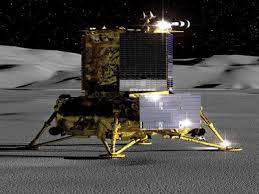New Delhi. The Indian Space Research Organization ( ISRO ) says that after completing the mission of Chandrayaan-3 lander Vikram lander and rover Pragyan, they were put into sleep mode earlier this month. Since there is severe winter on the Moon and the temperature had become very low, now the only hope is that the lander Vikram lander and the rover Pragyan will wake up and send the signal.
Regarding this, Nilesh M Desai, Director of Space Applications Centre, one of the major centers of ISRO, said on Friday that Vikram is preparing to wake up the lander and rover from ‘sleep mode’, but they are automatic and will wake up automatically. ISRO is trying to contact them, if they wake up then signals will be received here on Earth, but this has not happened yet.
Efforts are on, but no signal has come yet
He said that it was expected that after sunrise on the Moon on September 22, signals would come as soon as the solar powered lander and rover are charged. No signal has been received yet and efforts are on to establish contact with Chandrayaan-3’s lander Vikram and rover Pragyan. Both the lander and rover were put into sleep mode earlier this month, on September 4 and 2 respectively, before lunar night began on Earth’s only natural satellite.
Will inform everyone if new signals are received
Desai said that people will be informed as soon as new indications are received. Noting a 50-50 percent chance of revival, the scientist further said that if the electronics survive the cold temperatures then we will receive signals. “Otherwise, the mission has already done its job,” he said.
There is still hope for Pragyan, we will have to wait now
The scientist said that if the lander and rover wake up again, the experiments will continue on the lunar surface. Meanwhile, Padmashree awardee and former ISRO scientist Myleswami Annadurai said on ISRO’s efforts to revive Chandrayaan-3’s Vikram lander and Pragyan rover, “…I am quite optimistic about Pragyan because it has been tested …But, regarding the lander, we will have to wait and see.
 Indian Thought Latest News & Views
Indian Thought Latest News & Views



